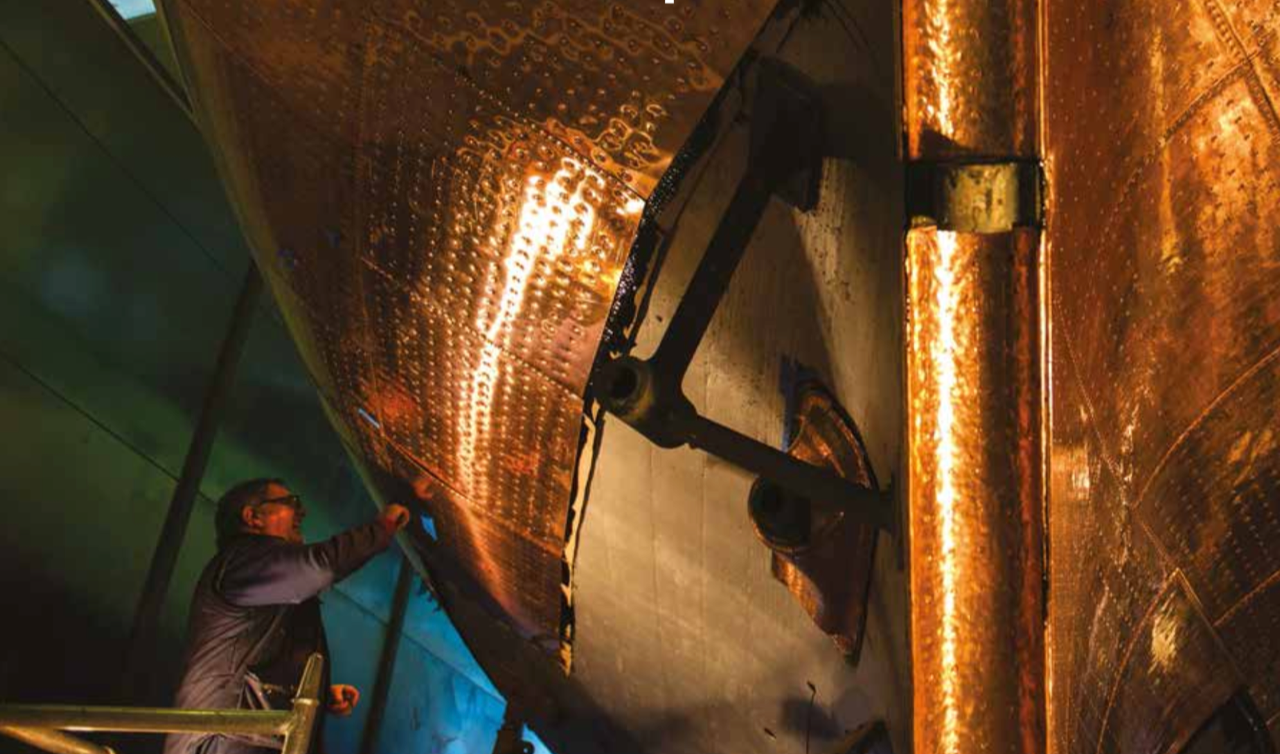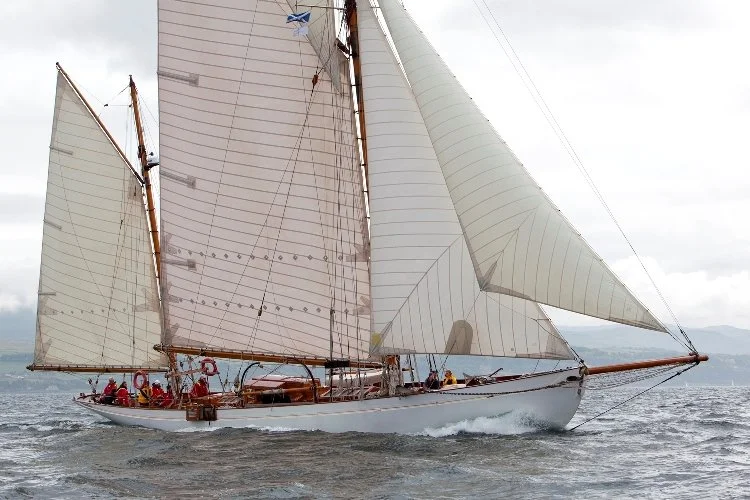a soft, malleable, and ductile metal
By Malcolm Lambe
“Even older than the sheathing methods were the various graving and paying techniques. There were three main substances used: white stuff, which was a mixture of whale oil, rosin and brimstone (sulphur); black stuff, a mixture of tar and pitch; and brown stuff, which was simply brimstone added to black stuff.”
My timber classic moored in Pittwater seems to have had more growth on it recently. Or a should say – different growth. There looks to be more barnacles than weed lately. Others in my area have commented on it too and reckon there's an invasive species of barnacle about, and that's why there is such rapid re-growth. Something to do with the huge amounts of fresh water coming down the Hawkesbury after the floods last year. Some are seeing barnacles on Altex No5 antifoul after just a couple of months. We all know the older, more toxic antifouls were more efficient. But we can’t go back to that.
Anyway lately I’ve been reading how older boats had copper-sheathing – and I remember seeing that myself when working as a shed-hand fifty-something years ago.
So...I was researching antifouls and came across this recent pic of copper sheathing being applied to a 84 foot classic yacht at Fairlie Yachts in the U.K.. To wit – KENTRA a one hundred years old historic William Fife design.
KENTRA at Fairlie Yachts
It took the shipwrights more than 1,300 hours to complete the re-coppering process. KENTRA was originally launched with a copper hull in 1923, and she underwent a major rebuild at Fairlie 20 years ago. This is the first time her hull has needed an update since that rebuild two decades ago, and according to the Fairlie, the new copper cladding will protect Kentra’s hull for another 20 years. It works best on yachts that are used often; if sat still for too long, the copper can become tarnished.
Copper sheathing on yacht hulls was developed and introduced by the British Royal Navy in the 18th century in order to combat deterioration that traditional wooden boats faced. Copper bottom cladding was antifouling before there was modern antifouling. Previously the most common method of antifouling were through the use of wood-sheathing and sometimes lead sheathing. In fact the ancient Greeks applied lead sheathing to their vessels.
Even older than the sheathing methods were the various graving and paying techniques. There were three main substances used: white stuff, which was a mixture of whale oil, rosin and brimstone (sulphur); black stuff, a mixture of tar and pitch; and brown stuff, which was simply brimstone added to black stuff. It was common practice to coat the hull with the selected substance, then cover that with a thin outer layer of wooden planking.
The first experiments with copper sheathing were made in the late 1750s: the bottoms and sides of several Royal Navy ships keels and false keels were sheathed with copper plates.
In 1761, the experiment was expanded, and the 32-gun frigate HMS ALARM was ordered to have her entire bottom coppered, in response to the terrible condition in which she had returned from service in the West Indies. HMS ALARM was chosen because, in 1761, a letter had been sent regarding the ship's condition, saying that the worms from the waters had taken a significant toll on the ship’s wooden hull. Before the copper plates were applied, the hull was covered with "soft stuff", which was simply hair, yarn and brown paper.
Yep – you read that right – hair, yarn and brown paper - Soft Stuff.
HMS ALARM 1758
The copper performed very well, both in protecting the hull from worm invasion and in preventing weed growth for, when in contact with water, the copper produced a poisonous film, composed mainly of Copper Oxychloride that deterred these marine organisms. Furthermore, as this film was slightly soluble, it gradually washed away, leaving no way in which marine life could attach itself to the ship.
However, it was soon discovered by the Admiralty that the copper bolts used to hold the plates to the hull had reacted with the iron bolts used in the construction of the ship, rendering many bolts nearly useless. In 1766, because of the poor condition of the iron bolts, ALARM's copper was removed.
They didn’t understand galvanic reaction between the copper and iron back then and reverted to lead sheathing for awhile. But with the American War of Independence in full swing, the Royal Navy set about coppering the bottoms of the entire fleet in 1778.
This also came about because in the same year a Liverpool shipbuilder, who did a brisk trade with West Africa, sent a letter to the Navy Board recommending "copper sheathing" as a solution to the problems of ship worm in warm tropical waters, and the effect on speed of tendrils of seaweed latching onto hulls. The letter may have contained information or been coincidental with a critical new technical breakthrough of protecting the iron bolting by applying thick paper between the copper plates and the hull. This had recently been trialled successfully on HMS JUPITER. This breakthrough was to be what would win over the Admiralty.
Coppering allowed the navy to stay at sea for much longer without the need for cleaning and repairs to the underwater hull, making it a very attractive, if expensive, proposition.
Each ship on average required 15 tonnes of copper applied on average as 300 plates. All the copper was supplied by British mines (the only country in the world at that time that could do so).
14 tons of metal were required to copper a 74-gun third-rate ship of the line and cost £1,500, compared to £262 for wood.
The benefits of increased speed and time at sea were deemed to justify the costs involved. In 1779 it was decided that the entire fleet should be coppered. Too late for Captain Cook. In 1770 he sailed off to the Pacific without copper sheathing and had to stop twice to careen and clean his ship the HMS ENDEAVOUR.
By the time the War of Independence ended in 1783, problems with the hull bolting were once more becoming apparent. Finally, a suitable alloy for the hull bolts was found, that of copper and zinc. At great cost the Admiralty decided in 1786 to go ahead with the re-bolting of every ship in the navy, thus finally eliminating the bolt corrosion problem. This process lasted several years, after which no significant changes to the coppering system were required and metal plating remained a standard method of protecting a ship's underwater hull until the advent of modern anti-fouling paint. In the 19th century, pure copper was partially superseded by Muntz Metal an alloy of 60% copper, 40% zinc and a trace of iron. Muntz Metal had the advantage of being somewhat cheaper than copper.
Merchant ship owners were attracted by the savings made possible by copper sheathing, despite the initial outlay. As the coppering was expensive, only the better owners tended to invest in the method, and as a result the use of copper sheathing tended to indicate a well-found and maintained ship, which led to Lloyds of London charging lower insurance premiums, as the vessels were better risks. From this stems the phrase "copper-bottomed" as an indication of quality.
The coppered stern of the famous CUTTY SARK
The copper-bottomed hull is definitely a rarity among yachts today and makes KENTRA quite special.
While this process is much more expensive than typical coatings, Fairlie says that the cost actually, “works out comparable to other forms of antifouling once you remove the annual costs of hauling and antifouling, which will not be required”.
Fairlie Yachts says “The copper sheathing process started with the removal of the old, spent copper and inspection of the Douglas Fir hull, which had not suffered any rot. Then, the nail holes that were used to attach the old coppering were filled with matchsticks dipped in resorcinol – they happened to be exactly the right size. There were quite a few of these, at the distribution-rate of one nail every two square inches. Then, the new copper went on over a bed of two coats of International Intertuf bituminous paint.
The copper, in sheets measuring 600mm by 1000mm (2ft x 3ft), and 1.2mm thick, were laid on builder’s paper coated with diluted Stockholm tar on both sides. The sheets at the waterline increased to 1.6mm thickness from previous experience.
The coppering started at the stern of the boat and worked forward, with overlaps.
KENTRA was built for Scottish industrialist, Kenneth MacKenzie-Clark in 1923. She has a long racing and round-the-world cruising history with several owners. In the early 50s, the yacht was turned into a venue for glamorous parties, with Christina of Spain, actors Brigitte Bardot and Errol Flynn among the yacht's celebrity guests. She eventually returned to Britain, where she was lying dormant for many years until bought at auctions in 1992 by her current owner who commissioned Fairlie Yachts to rebuild the boat over 18 months. Her owner undertook a circumnavigation between 1999 and 2004.
KENTRA-Photo by Ben Wood
Hmm. Anyone want to give me a price on copper-sheathing a 34 foot Laurent Giles design? Without the Soft Stuff.





